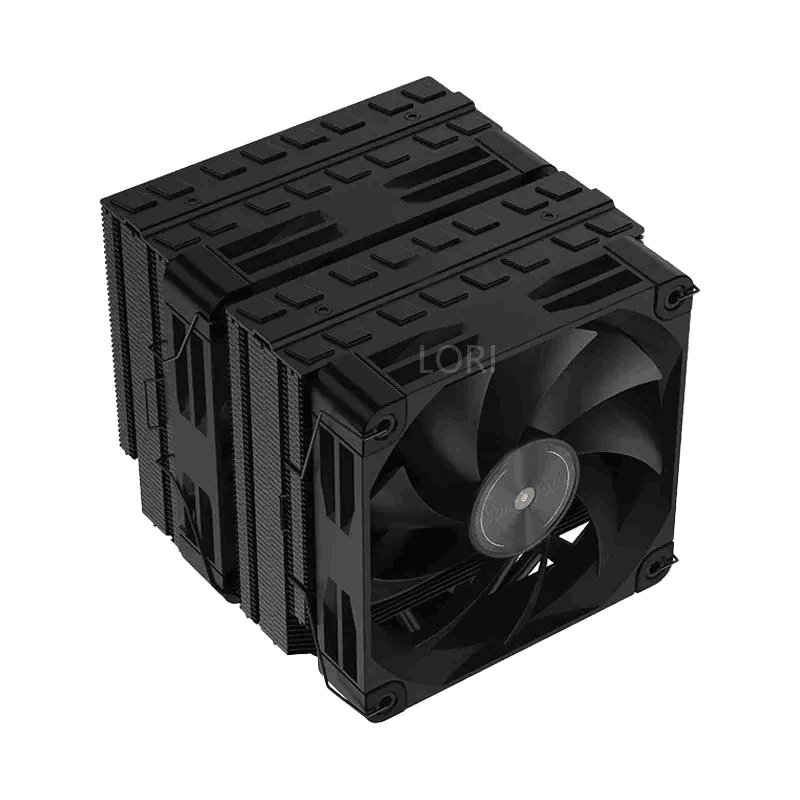BETTER TOUCH BETTER BUSINESS
Contact Sales at Lori.
Most DIY computer systems usually opt for air cooling as the most common and indispensable computer hardware. What is the principle of air cooling for CPUs, and what are the advantages and disadvantages of air cooling? It is divided into two categories. Keep reading to find out.
To answer these questions, let's first talk about the role of CPU air cooling.
The purpose of installing a CPU air cooler, of course, is to achieve cooling effects.
When our computer's CPU is running, it generates heat. If the heat is too high, it will cause instability of the machine, shorten its service life, and even burn out the machine. The role of CPU air cooling is to absorb this heat and expel it out of the case to achieve cooling purposes.
The Principle of Air Cooling
First, the components of air cooling for CPUs are as follows: heat conductive tube, heat dissipation fins, cooling fan, and RGB lighting effects (non-essential). The heatsink is tightly attached to the CPU base and is coated with silicone grease as a heat conductive material. When the CPU runs, the heat generated will be transferred through the heat conductive tubes of the air cooling heatsink to the heat dissipation fins, and then the heat on the heat dissipation fins will be taken away by the air moved by the fan. In terms of specifications, the more heat conductive tubes and the larger the diameter of the heat conductive tubes, the better the heat dissipation efficiency. The larger the total area of the heat dissipation fins, the better the heat dissipation efficiency, and the higher the fan speed, the better the heat dissipation efficiency.
Pros and Cons of Air Cooling Advantages
Safety, as the saying goes, "Cooling by water, from entry to claim settlement." Unlike high-end all-in-one water cooling or split water cooling, air cooling does not use cooling liquid and does not pose the risk of leaking.
A wide range of choices, the price range of air cooling is very wide, ranging from several hundred to several tens of dollars. The selection is very diverse.

Disadvantages
Noise and heat dissipation effect, as mentioned earlier, air cooling dissipates heat on the heat sink through a fan. Since it is a fan, there will always be noise, especially when encountering a CPU with high heat generation. The noise level increases as the fan speed is increased to enhance the heat dissipation effect of the heat sink is an inevitable consequence.
Classification of air cooling
At present, air cooling heat sinks are divided into two types, namely downward pressure type and tower type.
Both types of air cooling have their own advantages. The downward pressure type heat sink is smaller in size and more focused on overall heat dissipation effects, such as motherboard components and the CPU. The tower-type heat sink, on the other hand, specializes in enhancing the heat dissipation effect of the CPU.
Some people always like to compare downward pressure type and tower-type heat sinks and try to determine which one is better. In UP's opinion, this view is very childish.
Knowledge comes in degrees and skills are specialized, so it is necessary to consider the specific situation. At the same price, the heat dissipation effect of the tower-type heat sink may be much better than that of the downward pressure-type heat sink in ATX or MATX cases, but what about individual ITX cases? Don't even mention the cooling effect. Whether it can be installed may still be a problem.
When is it suitable to use downward pressure cooling?
Downward pressure cooling can be used when the CPU generates less heat. This can not only stabilize the temperature of the CPU but also take care of the temperature of other hardware, especially on low-end motherboards where no heat sink has been designed for the power module components. Installing downward pressure cooling can produce wonderful results.
In addition, downward pressure cooling is small in size and is suitable for installation in small cases.
Choose CPU cooling rationally
When DIYing, we should choose a heatsink based on our CPU model. Different CPUs generate different amounts of heat, and we cannot blindly buy a tower cooler just because someone says it's good. We should use the original heatsink that comes with the CPU, which can solve the problem for less than one or two hundred yuan, instead of wasting time and money on a cooler that costs the same amount.
Copyright © 2025 Shenzhen Lori Technology Co.,Ltd. | All Rights Reserved